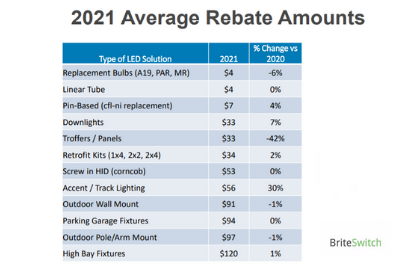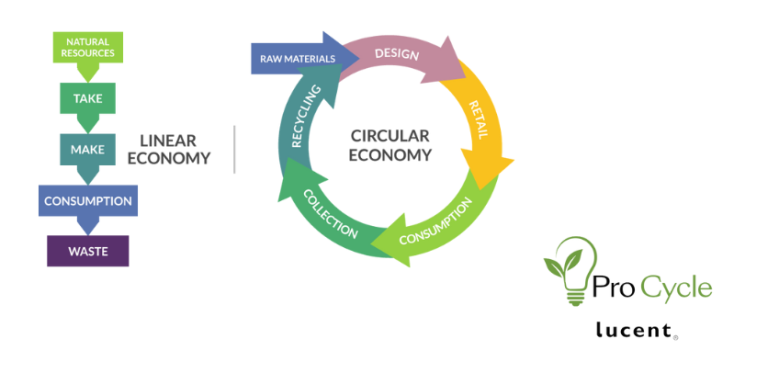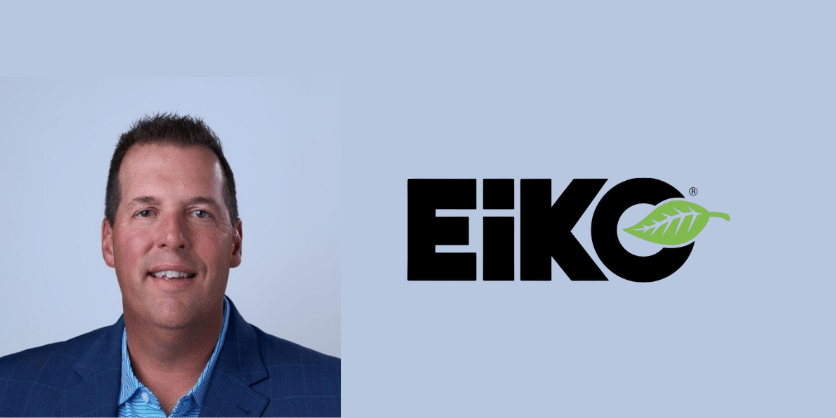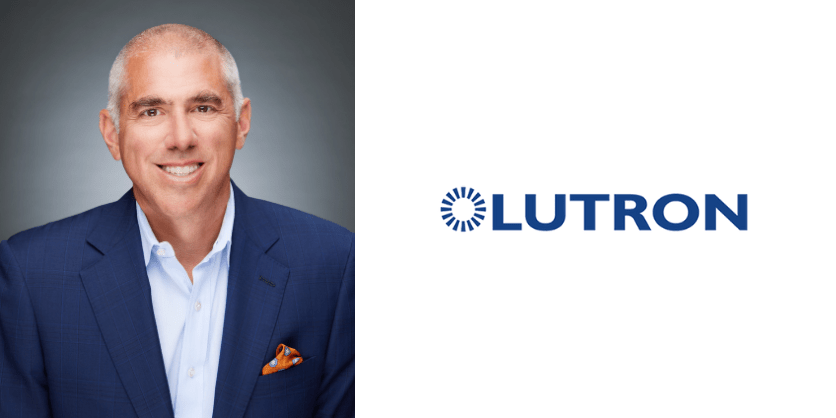How to Use Rebates as a Sales Tool

November 26, 2021
If you haven’t explored using rebates when quoting jobs, you could be leaving money on the table — and that is the last thing you want to happen in 2022. With materials shortages and supply issues continuing to raise prices, finding ways to increase margins will be critical for maintaining a healthy bottom line in the year ahead.
“Utilizing rebates can be one of the best tools in your toolbox to close a sale,” noted Randy Young, Marketing & Operations Manager of New Jersey-based BriteSwitch, who outlined the benefits in a recent webinar.
Some background
Often referred to as “utility rebates,” there are roughly 400 of them available to the 3,000+ utilities nationwide, depending on the state and region. The first step is to find out which rebate programs are offered by the utility in the area where the project is located.
There are three types of rebates: Prescriptive offers a set dollar amount for a lamp or fixture or per tube, and the customer received the rebate after installation; Custom can be based on kilowatt hours, watts saved, or other parameters; and Mid-Stream (also called an “instant” or “upstream” rebate), where the contractor/distributor deducts the rebate amount off the invoice, files the rebate with the utility, and the money comes back to the contractor/distributor instead of the customer.
“Be sure to look at all of the types of rebates in your area because one type might be better than another one for you,” Young advised.
A Lot of Opportunity
Right now, 74 percent of the country is covered by a commercial lighting rebate program. “There’s a lot of opportunity out there depending on the types of projects you’re doing,” Young stated.
LEDs make up the majority of the rebates, whereas years ago most rebates were for converting to fluorescent. Similarly, the rebate dollar amounts have been going down 10-20 percent each year as LED conversion becomes widespread – which is what happened with the fluorescent rebates – leading experts to wonder if they will bottom out or be discontinued soon.
This year was the first where there hasn’t been a decrease in that percentage, although Young suggested the pandemic might be the reason why as projects struggled to be completed in 2021. Manufacturer price increases (due to supply chain disruption) could be another reason the rebate amounts have stayed the same. “The price of LEDs has been going up. Because of that, they haven’t had to lower the rebate amount,” Young explained. “Typically, they try to match the rebate amount to the price so everyone is paying their fair share.”
Naturally the more energy a replacement saves, the higher the rebate. Therefore, retrofits replacing HIDs in high bays, street poles, and parking garages are going to have the highest rebates. The ones with the lowest rebates are the simple replacements such as A19s and PAR lamps; those have been on the market for so long, the rebate numbers have been going down.
“When estimating rebates for your projects, it’s important to look at the cost caps,” Young remarked. “A program might say it gives $120 for a high bay, but it won’t pay more than 50 percent of material costs. Usually that cost cap disclaimer is somewhere in the paperwork — it could be in the fine print, or on page four of the Terms and Conditions. You have to over-familiarize yourself with these programs so that you don’t over-promise customer rebates.”
As we enter 2022, be aware of changes in the rebate amounts. “A lot of people are looking for great opportunities where the rebates cover 100 percent of the project or even gives money back to the customer when all is said and done. While that used to happen five or six years ago, it’s no longer happening today,” Young said. “We’ve seen 100 percent of material cost covered for the fixtures themselves or the tubes, but not for the labor.” In some cases, labor will be covered, but the overall project costs will be capped at 50 percent. It is important to look at the fine print when estimating rebates for customers.
Where Are the Best Areas?
“One of the questions I get asked the most often is, ‘Where are the best rebate areas?’ There’s no straightforward answer. A program that could be the best for pole lights might be the worst for tube replacements. Each program operates completely independently,” Young cautioned. “Based on what we’ve seen over the past two years, we’ve come up with some good, great, and not-so-great areas. If you’re focusing on a certain area, or already have projects there, make sure you are taking advantage of what’s available.”
According to BriteSwitch research, the Northeast – Maine, Vermont, New Hampshire, Rhode Island, Massachusetts, Connecticut, New Jersey, and New York – is the best for rebate programs. “It’s pretty reliable funding. The Northeast is desperate for energy savings, so they fund these programs very well,” Young explained. What makes them great is that they are mostly state programs. “In some cases, you could get 100 percent material costs covered, so you might be able to offer a project with free materials. They’ll still have to pay for the labor, but if the rebate is for $150 a fixture and you’re offering the fixture at that amount, it’s going to come out free for them,” Young remarked.
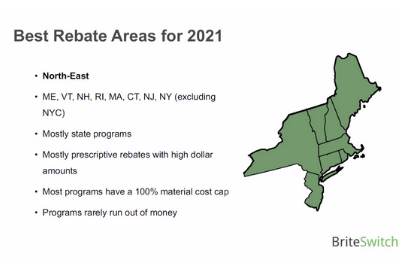
States that BriteSwitch considers to be “Good” for rebates are in the Midwest/Northwest (Washington, Idaho, Wyoming, Minnesota, Iowa, Missouri). “They have decent programs and good opportunities, although none are state programs,” Young said. As prescriptive programs, these are easy to estimate, but there could be a lot of utility and rebate programs in play that you have to work through. Because these are not state programs, a customer in one town could be eligible for a certain rebate, but five minutes down the road in another town, there could be a completely different rebate available.
“For example, in Washington, there are 31 rebate programs,” Young explained, adding, “You have to make sure you use the right one when you estimate the job and when you help the customer get their rebate.” Since these programs are smaller than state-run ones, they tend to have smaller budgets and begin to run out of money around November and December. “The rebates almost certainly come back at the start of the next year, but if you have a project beginning at the end of the year, it could become an issue,” he cautioned.
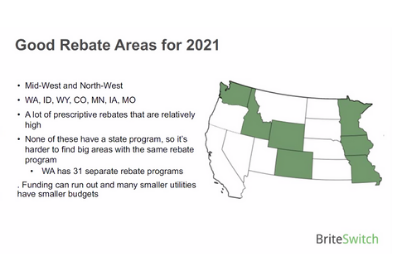
The “worst” rebate areas are California, Texas, Florida, Ohio, and Alabama. “California used to have great rebate programs 8 to 10 years ago, but recently they started to phase those out and instead are using legislation – such as Title 24 – to increase energy efficiency rather than paying customers,” Young stated.
“We get a lot of questions about Florida. The two utilities there – Florida Power & Light and Duke Energy – have virtually no commercial lighting rebates. There are some areas, like Orlando and Tampa, that have programs from their municipal power providers, but for the most part it wouldn’t be where I’d recommend to target,” he advised.
There is both good and bad news about Texas, according to Young. The good is that there are rebate programs available throughout the state; the bad is that they’re tricky to navigate. “Most of them require that you become a ‘project sponsor,’” he explained. To become one, you must undergo training before joining their system. “These programs are pretty complex as to how to calculate the rebate, and they’re relatively small amounts when all is said and done,” he remarked. “They tend to run out of funding regularly by September or October and they don’t allow type A or B lamps in some of the applications — so if you’re doing simple retrofits, Texas is probably not your place to focus.”
There was a big change in Ohio’s rebate programs in 2021, according to BriteSwitch. “All of the rebate programs from the major utilities were discontinued — and that had nothing to do with COVID or the economy. It was all due to legislation in the State House. They are trying to pass a new law – which would have new rebates – but there is no set deadline,” Young commented. “So right now, it’s not a good place to focus.”
Alabama is one of the few states that does not have a rebate program. Since the state feels there is a plentiful supply of energy, there are no funds allocated to improving efficiency.
How to Get the Rebate
If you haven’t heard of the non-profit organization DLC (DesignLights Consortium®), it’s time to become familiar with it. The group’s goal is to provide a trusted, impartial assessment of the industry’s highest-performing lighting products and systems. Young likened DLC to the U.S. Department of Energy’s ENERGY STAR® certification program for residential products.
According to BriteSwitch, approximately 70-85 percent of the rebates require DLC Qualified Product Listing (QPL), depending on the category — but be careful. Seeing if the manufacturer has the DLC logo on its website or spec sheet is not enough. “A utility program will not accept that as proof,” Young cautioned. The manufacturer has to be actively listed on the DLC website (designlights.org) under the DLC Qualified Product (QPL) List when the application is submitted. If it’s not there when the utility checks, the rebate application will be rejected, and you must submit another product to qualify.
Most importantly, the DLC is changing to a new version starting in June 2022. The new version – DLC 5.1 – will have updated technical requirements. Any product that does not meet DLC 5.1 will drop off the list, which means it will not be eligible for rebates. “For any projects starting in the second half of 2022, make sure to ask, ‘Is this product DLC 5.1-certified,’” Young advised.
How Long Do Rebates Take?
The rebate process takes typically about five months from start to finish. “When we tracked the process, we found there are 14 interactions between us, the contractor, the utility, or the customer. That’s a lot of back and forth! If you’re going to get into rebates, make sure you have the resources to track it properly,” Young remarked.
Just like the pandemic has delayed most every process that companies deal with, rebates are no exception. “Rebate pre-approvals have taken longer than usual – up to 22 days vs 18 days in 2019 – due to short staffing. If you start work before you get the approval – sometimes even if the P.O. is signed – the application will be rejected,” Young warned.
There are exceptions, of course. For example, in North Carolina, Duke Energy does not require pre-approval and tends to pay rebates quickly, which makes them a great program to work with, according to BriteSwitch.
Naturally, receiving the check is the hardest part. “Right now it’s taking 53 days on average to get a check,” Young reported. Compare that to 2018, when it took 38 days. With the new U.S. Postal Service slowdown that took effect in October, it might take even longer to receive rebate checks.
Changes in 2021
There have been a few changes that took effect this year. CLEAResult® – the largest provider of energy-efficiency programs and services in North America – has taken over a large percentage of the programs and the process of transferring scores of records correctly has led to considerable delays. “Give yourself extra time if you’re working with these programs,” Young stated.
In addition, approximately one-third of the rebate programs now require you to become a “trade ally,” which means you have to reach out to utilities, attend their training, submit insurance documentation – and sometimes customer referrals – in order to be approved for that program. “If you’re going to start work in a new area, find out if you need to be a trade ally for that rebate program,” Young advised.
There is another opportunity besides rebates. In the Mid-Atlantic area (Ohio, Pennsylvania, Kentucky, Virginia, and New Jersey) Young says there is sometimes a capacity incentive available. “Instead of coming from the electric utility, this comes from the electric grid, which transmits the energy across the mid-Atlantic. These programs don’t require pre-approval, and it’s a little extra funding on top of the rebate,” he explained. “While it’s not a huge amount of money – it usually is 10-20 percent of the rebate amount – it’s still free money available to customers and with no pre-approval, it’s great to be able to get that for customers as well.”
Perform a Double-Check
- Before you get started on rebates, make sure the products you are using are ENERGY STAR-rated or DLC-listed.
- Confirm the electric account is eligible for rebates. Sometimes there is a certain rate code or meter number required, or a societal benefits charge.
- Make sure you get pre-approval.
- Confirm that the utility still has funding.
Bottom Line
Rebates can be a highly effective sales tool for winning a project. They can typically improve the payback by 20 to 25 percent, which means “it might get a project that’s out of that sweet spot of payback in 1 to 2 years into that area and get the customer to greenlight it,” Young said. “It also helps you to put the focus on the net cost, not the initial cost, which will protect your margin.”
Applying rebates can also stop a potential client from walking out the door. “We did a project where a customer went to a distributor and said they found the same bulb on Amazon for $8.95, asking, ‘Can you offer that bulb to me at that price?’ Without using a rebate, the distributor could only make a mark-up of 43 cents (5%), but there was a $5 rebate. When they took that into account, the distributor was able to have his mark-up go to 40% and the customer ended up paying less for the bulb. So it’s a good way to pad that margin and take the focus off the initial cost,” Young stated.
While it can take time to research rebates in your area on your own, there are now several rebate calculation tools available that automatically do the work for you. Investigating the variety of rebate programs out there is an extra step worth taking in 2022 and beyond to maximize your company’s profitability.


